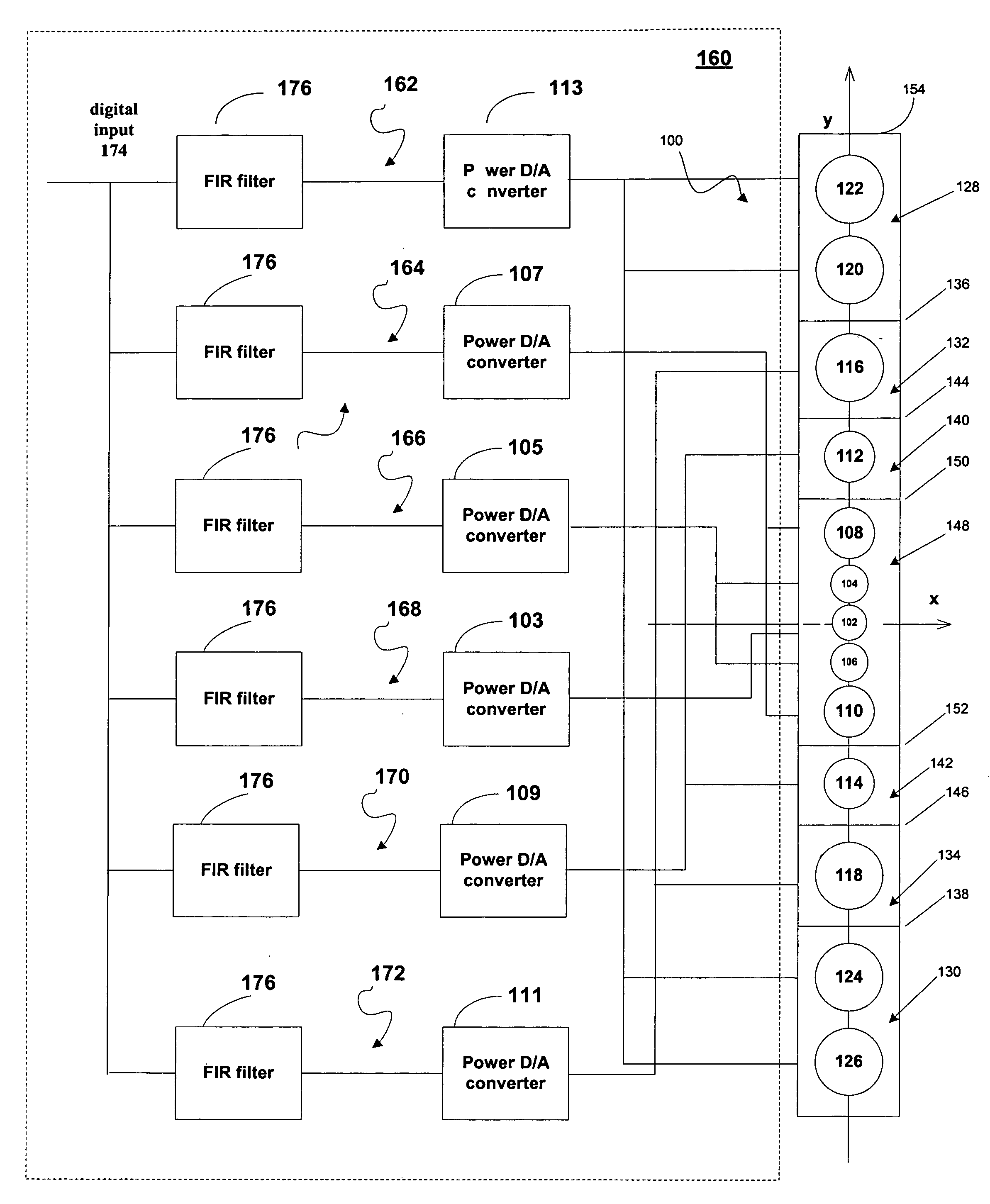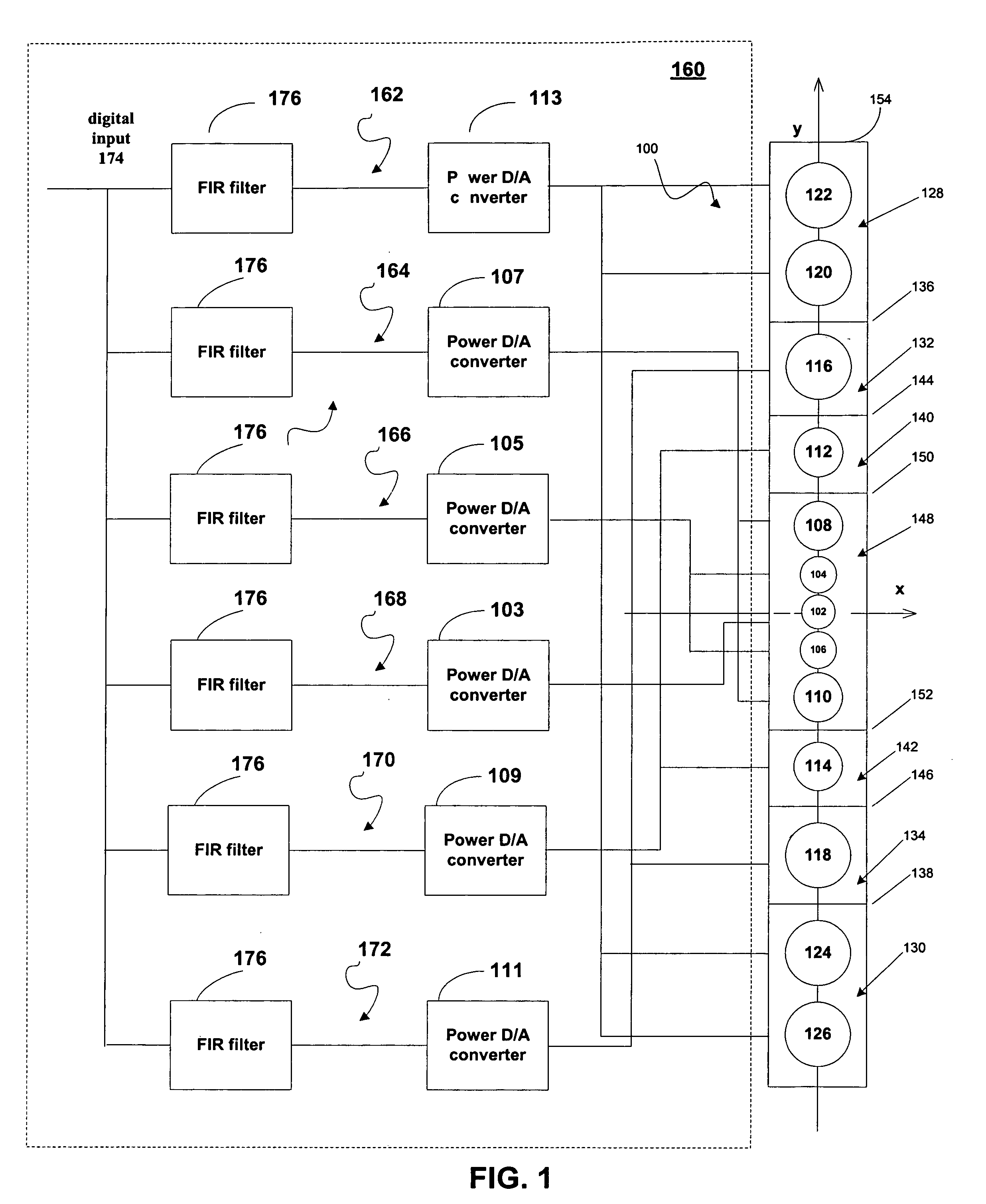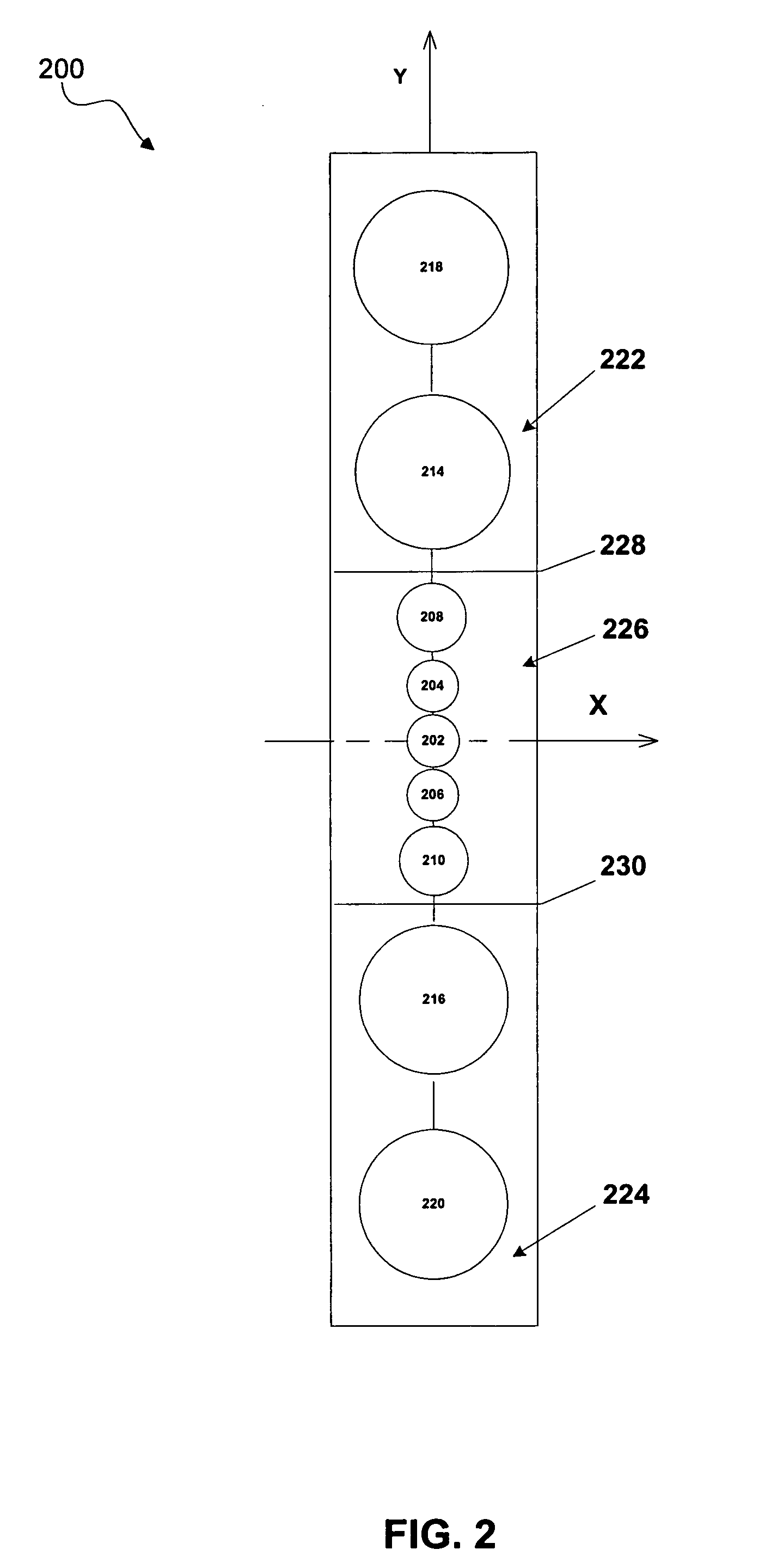Loudspeaker array system
a loudspeaker array and loudspeaker technology, applied in the direction of stereophonic arrangments, transducer casings/cabinets/supports, electrical transducers, etc., can solve the problems of insufficient spacing, audible discontinuities, and inability to achieve optimal spacing, etc., to achieve high-quality sound
- Summary
- Abstract
- Description
- Claims
- Application Information
AI Technical Summary
Benefits of technology
Problems solved by technology
Method used
Image
Examples
Embodiment Construction
[0023]FIG. 1 illustrates an example implementation of a one-dimensional (1D) multi-way loudspeaker 100 of the invention and a block diagram of the signal flow to each of the loudspeaker drivers in the system 100. As shown in FIG. 1, the multi-way loudspeaker 100 may be designed as a six-way loudspeaker having (i) a center tweeter 102 connected to a first power D / A converter 103, (ii) two additional tweeters 104 and 106 connected to a second power D / A converter 105, (iii) two midrange drivers 108 and 110 connected to a third power D / A converter 107, (iv) two midrange drivers 112 and 114 connected to fourth power D / A converter 109, (v) two woofers 116 and 118 connected to a fifth power D / A converter 111 and (vi) four woofers 120, 122, 124 and 126 connected to a sixth power D / A converter 113. The connection between the loudspeakers to each amplifier represents a different way in the multi-way loudspeaker. Thus, the loudspeaker may be designed as a single-channel multi-way loudspeaker. ...
PUM
 Login to View More
Login to View More Abstract
Description
Claims
Application Information
 Login to View More
Login to View More - R&D
- Intellectual Property
- Life Sciences
- Materials
- Tech Scout
- Unparalleled Data Quality
- Higher Quality Content
- 60% Fewer Hallucinations
Browse by: Latest US Patents, China's latest patents, Technical Efficacy Thesaurus, Application Domain, Technology Topic, Popular Technical Reports.
© 2025 PatSnap. All rights reserved.Legal|Privacy policy|Modern Slavery Act Transparency Statement|Sitemap|About US| Contact US: help@patsnap.com



